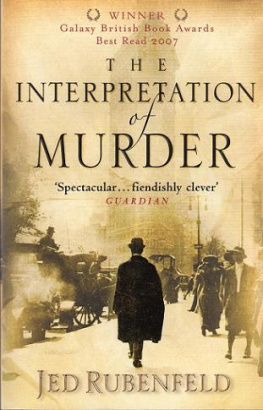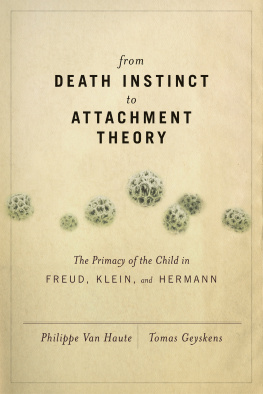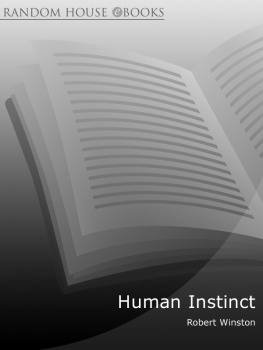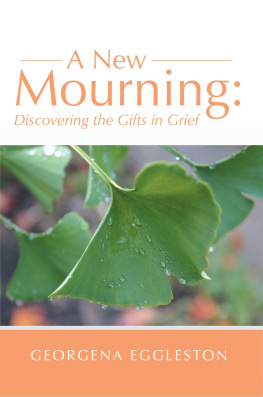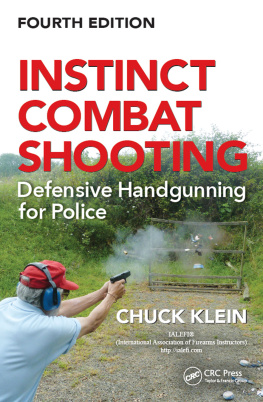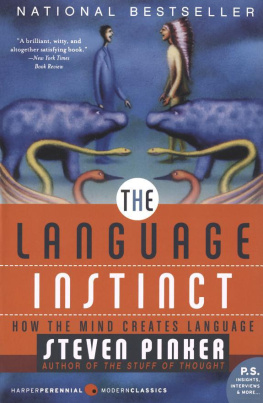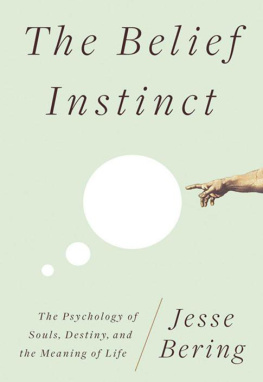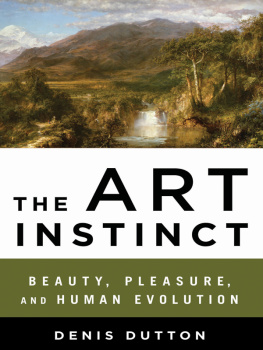Jed Rubenfeld - The Death Instinct
Here you can read online Jed Rubenfeld - The Death Instinct full text of the book (entire story) in english for free. Download pdf and epub, get meaning, cover and reviews about this ebook. year: 2010, publisher: Headline Publishing, genre: Detective and thriller. Description of the work, (preface) as well as reviews are available. Best literature library LitArk.com created for fans of good reading and offers a wide selection of genres:
Romance novel
Science fiction
Adventure
Detective
Science
History
Home and family
Prose
Art
Politics
Computer
Non-fiction
Religion
Business
Children
Humor
Choose a favorite category and find really read worthwhile books. Enjoy immersion in the world of imagination, feel the emotions of the characters or learn something new for yourself, make an fascinating discovery.
- Book:The Death Instinct
- Author:
- Publisher:Headline Publishing
- Genre:
- Year:2010
- Rating:3 / 5
- Favourites:Add to favourites
- Your mark:
- 60
- 1
- 2
- 3
- 4
- 5
The Death Instinct: summary, description and annotation
We offer to read an annotation, description, summary or preface (depends on what the author of the book "The Death Instinct" wrote himself). If you haven't found the necessary information about the book — write in the comments, we will try to find it.
The Death Instinct — read online for free the complete book (whole text) full work
Below is the text of the book, divided by pages. System saving the place of the last page read, allows you to conveniently read the book "The Death Instinct" online for free, without having to search again every time where you left off. Put a bookmark, and you can go to the page where you finished reading at any time.
Font size:
Interval:
Bookmark:
The Death Instinct
Jed Rubenfeld
Copyright 2010 Jed Rubenfeld
The right of Jed Rubenfeld to be identified as the Author of
the Work has been asserted by him in accordance with the
Copyright, Designs and Patents Act 1988.
First published in Great Britain in 2010 by
HEADLINE REVIEW
An imprint of HEADLINE PUBLISHING GROUP
Apart from any use permitted under UK copyright law, this publication may
only be reproduced, stored, or transmitted, in any form, or by any means,
with prior permission in writing of the publishers or, in the case of reprographic
production, in accordance with the terms of licences issued by the Copyright Licensing Agency.
This is a work of fiction. While this book was inspired by and based on real figures
and events, the narrative is entirely fiction. The thoughts, feelings and actions ascribed to
the characters are the authors invention and the book should be understood to be a
fictional account, not a history.
Cataloguing in Publication Data is available from the British Library
Hardback ISBN 978 0 7553 4399 7
Trade paperback ISBN 978 0 7553 4400 0
Typeset in Bembo by Palimpsest Book Production Limited, Falkirk, Stirlingshire
Printed and bound in Great Britain by
Clays Ltd, St Ives plc
Headline's policy is to use papers that are natural, renewable and recyclable products and
made from wood grown in sustainable forests. The logging and manufacturing processes are
expected to conform to the environmental regulations of the country of origin.
HEADLINE PUBLISHING GROUP
An Hachette UK Company
To my brilliant daughters, Sophia and Louisa
Table of Contents
On a clear September day in lower Manhattan, the financial center of the United States became the site of the most massive terrorist attack that had ever occurred on American soil. It was 1920. Despite the then-largest criminal investigation in United States history, the identity of the perpetrators remains a mystery.
Part 1
Chapter One
Death is only the beginning; afterward comes the hard part.
There are three ways to live with the knowledge of death - to keep its terror at bay. The first is suppression: forget it's coming; act as if it isn't. That's what most of us do most of the time. The second is the opposite: memento mori. Remember death. Keep it constantly in mind, for surely life can have no greater savor than when a man believes today is his last. The third is acceptance. A man who accepts death - really accepts it - fears nothing and hence achieves a transcendent equanimity in the face of all loss. All three of these strategies have something in common. They're lies. Terror, at least, would be honest.
But there is another way, a fourth way. This is the inadmissible option, the path no man can speak of, not even to himself, not even in the quiet of his own inward conversation. This way requires no forgetting, no lying, no groveling at the altar of the inevitable. All it takes is instinct.
At the stroke of noon on September 16, 1920, the bells of Trinity Church began to boom, and as if motivated by a single spring, doors flew open up and down Wall Street, releasing clerks and message boys, secretaries and stenographers, for their precious hour of lunch. They poured into the streets, streaming around cars, lining up at favorite vendors, filling in an instant the busy intersection of Wall, Nassau, and Broad, an intersection known in the financial world as the Corner - just that, the Corner. There stood the United States Treasury, with its Greek temple facade, guarded by a regal bronze George Washington.
There stood the white-columned New York Stock Exchange. There, J. P. Morgan's domed fortress of a bank.
In front of that bank, an old bay mare pawed at the cobblestones, hitched to an overloaded, burlap-covered cart - pilotless and blocking traffic. Horns sounded angrily behind it. A stout cab driver exited his vehicle, arms upraised in righteous appeal. Attempting to berate the cartman, who wasn't there, the taxi driver was surprised by an odd, muffled noise coming from inside the wagon. He put his ear to the burlap and heard an unmistakable sound: ticking.
The church bells struck twelve. With the final, sonorous note still echoing, a curious taxi driver drew back one corner of moth-eaten burlap and saw what lay beneath. At that moment, among the jostling thousands, four people knew that death was pregnant in Wall Street: the cab driver; a redheaded woman close by him; the missing pilot of the horse-drawn wagon; and Stratham Younger, who, one hundred fifty feet away, pulled to their knees a police detective and a French girl.
The taxi driver whispered, 'Lord have mercy.'
Wall Street exploded.
Two women, once upon a time the best of friends, meeting again after years apart, will cry out in disbelief, embrace, protest, and immediately take up the missing pieces of their lives, painting them in for one another with all the tint and vividness they can. Two men, under the same conditions, have nothing to say at all.
At eleven that morning, one hour before the explosion, Younger and Jimmy Littlemore shook hands in Madison Square, two miles north of Wall Street. The day was unseasonably fine, the sky a crystal blue. Younger took out a cigarette.
'Been a while, Doc,' said Littlemore.
Younger struck, lit, nodded.
Both men were in their thirties, but of different physical types. Littlemore, a detective with the New York Police Department, was the kind of man who mixed easily into his surroundings. His height was average, his weight average, the color of his hair average; even his features were average, a composite of American openness and good health. Younger, by contrast, was arresting. He was tall; he moved well; his skin was a little weathered; he had the kind of imperfections in a handsome face that women like. In short, the doctor's appearance was more demanding than the detective's, but less amiable.
'How's the job?' asked Younger.
'Job's good,' said Littlemore, a toothpick wagging between his lips.
'Family?'
'Family's good.'
Another difference between them was visible as well. Younger had fought in the war; Littlemore had not. Younger, walking away from his medical practice in Boston and his scientific research at Harvard, had enlisted immediately after war was declared in 1917. Littlemore would have too - if he hadn't had a wife and so many children to provide for.
'That's good,' said Younger.
'So are you going to tell me,' asked Littlemore, 'or do I have to pry it out of you with a crowbar?'
Younger smoked. 'Crowbar.'
'You call me after all this time, tell me you got something to tell me, and now you're not going to tell me?'
'This is where they had the big victory parade, isn't it?' asked Younger, looking around at Madison Square Park, with its greenery, monuments, and ornamental fountain. 'What happened to the arch?'
'Tore it down.'
'Why were men so willing to die?'
'Who was?' asked Littlemore.
'It doesn't make sense. From an evolutionary point of view.' Younger looked back at Littlemore. 'I'm not the one who needs to talk to you. Its Colette.'
'The girl you brought back from France?' said Littlemore.
'She should be here any minute. If she's not lost.'
'What's she look like?'
Younger thought about it: 'Pretty.' A moment later, he added, 'Here she is.'
A double-decker bus had pulled up nearby on Fifth Avenue. Littlemore turned to look; the toothpick nearly fell out of his mouth. A girl in a slim trench coat was coming down the outdoor spiral staircase. The two men met her as she stepped off.
Colette Rousseau kissed Younger once on either cheek and extended a slender arm to Littlemore. She had green eyes, graceful movements, and long dark hair.
Next pageFont size:
Interval:
Bookmark:
Similar books «The Death Instinct»
Look at similar books to The Death Instinct. We have selected literature similar in name and meaning in the hope of providing readers with more options to find new, interesting, not yet read works.
Discussion, reviews of the book The Death Instinct and just readers' own opinions. Leave your comments, write what you think about the work, its meaning or the main characters. Specify what exactly you liked and what you didn't like, and why you think so.


